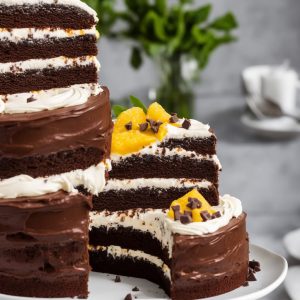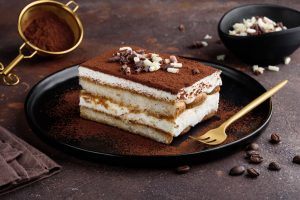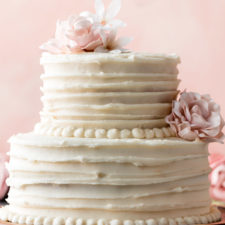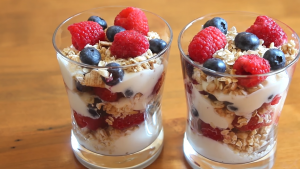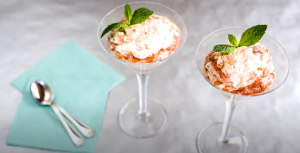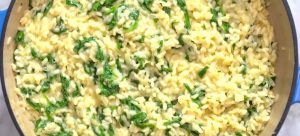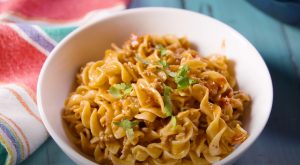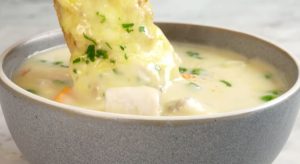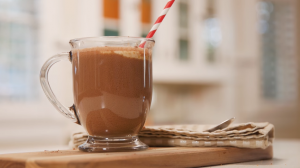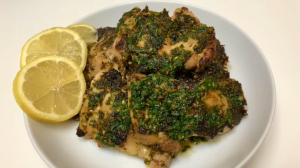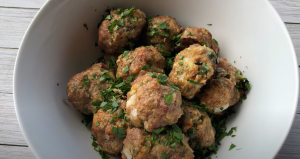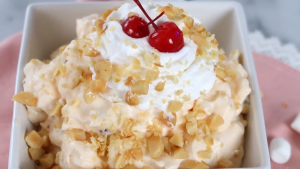Baking at high altitudes can be tricky, but this high altitude layer cake recipe ensures you get a perfectly moist and fluffy cake every time. By adjusting the ingredients and baking times, this recipe takes into account the unique challenges of baking at elevations above sea level.
Photos of High Altitude Layer Cake Recipe
One ingredient that might not be commonly found in every home is cake flour. While all-purpose flour is a staple in most kitchens, cake flour is much lighter and gives the cake its delicate texture. Make sure to pick up a box from the supermarket if it's not already in your pantry.
Ingredients for High Altitude Layer Cake Recipe
cake flour: A finely milled flour with lower protein content that results in a tender crumb.
baking powder: A leavening agent that helps the cake rise.
butter: Adds richness and moisture to the cake.
white sugar: Sweetens the cake and helps with the overall texture.
eggs: Provide structure and moisture.
vanilla extract: Adds a rich, aromatic flavor.
milk: Hydrates the batter and adds moisture.
One reader, Cary Schoonover says:





This high altitude layer cake recipe is fantastic! The cake turned out perfectly fluffy and moist. The instructions were easy to follow, and the flavor was delightful. Definitely a keeper for special occasions!
Techniques Required for High Altitude Baking
How to sift flour: Sifting flour involves passing it through a fine mesh sieve to remove lumps and aerate it, ensuring a smooth and light texture in the final batter. How to cream butter and sugar: Creaming butter and sugar involves beating them together until the mixture becomes light and fluffy, which helps to incorporate air and create a tender cake. How to alternate wet and dry ingredients: Alternating wet and dry ingredients means adding them to the batter in small portions, starting and ending with the dry ingredients, to ensure even mixing and prevent overworking the batter. How to prepare cake pans: Greasing and flouring cake pans involves coating the pans with a thin layer of butter or oil and then dusting them with flour to prevent the cake from sticking. How to test cake doneness: Testing cake doneness involves inserting a knife or toothpick into the center of the cake; if it comes out clean, the cake is done baking.
How To Make High Altitude Layer Cake
Whip up a soft and fluffy layer cake made with classic cake ingredients for a tasty dessert! Enjoy a sweet batch in just under one hour.
Serves:
Ingredients
- 2⅔cupscake flour,sifted
- 2tspbaking powder
- ¾cupbutter,softened
- 1¼cupswhite sugar
- 4eggs
- 1tbspvanilla extract
- 1cupmilk
Instructions
-
Preheat the oven to 375 degrees F. Grease and flour 2 9-inch round cake pans.
-
Sift the cake flour and baking powder into a bowl and set aside.
-
In a large bowl, beat the butter and sugar for up to 10 minutes until light and fluffy. Mix in the eggs, 1 at a time, fully blending each one in before adding the next.
-
Stir in the vanilla. Stir in the flour and baking powder, alternating with the milk until the batter is smooth.
-
Divide the batter evenly between the prepared pans. Tap the bottoms of the pans on the counter a few times to remove the air bubbles.
-
Bake in the oven for 25 to 30 minutes until a knife inserted into the center of the cakes comes out clean. Cool the cakes in the pans set over a wire rack.
-
Serve and enjoy!
Nutrition
- Calories: 328.97kcal
- Fat: 13.79g
- Saturated Fat: 8.15g
- Trans Fat: 0.47g
- Monounsaturated Fat: 3.69g
- Polyunsaturated Fat: 0.86g
- Carbohydrates: 45.99g
- Fiber: 0.52g
- Sugar: 22.11g
- Protein: 5.06g
- Cholesterol: 85.86mg
- Sodium: 92.09mg
- Calcium: 95.46mg
- Potassium: 84.05mg
- Iron: 2.59mg
- Vitamin A: 129.33µg
Crucial Technique Tip for High Altitude Layer Cakes
When baking at high altitudes, it's crucial to adjust your baking powder and sugar levels to prevent your cake from collapsing. Reduce the baking powder by 1/4 teaspoon for every teaspoon called for in the recipe, and decrease the sugar by 1 to 2 tablespoons. Additionally, increase the oven temperature by 15 to 25 degrees Fahrenheit to help set the cake structure more quickly.
Time-Saving Tips for Making a Layer Cake
Pre-measure ingredients: Measure and prepare all ingredients in advance to streamline the baking process.
Use a stand mixer: A stand mixer can save time and effort when creaming butter and sugar and mixing batter.
Room temperature ingredients: Ensure butter, eggs, and milk are at room temperature for easier mixing and better cake texture.
Double the recipe: Bake two cakes at once and freeze one for later use, saving time on future baking.
Use parchment paper: Line cake pans with parchment paper for easy cake removal and less cleanup.
Substitute Ingredients For High Altitude Layer Cake Recipe
cake flour - Substitute with all-purpose flour: Use 2⅔ cups of all-purpose flour minus 5 tablespoons, then add 5 tablespoons of cornstarch. This mimics the lower protein content of cake flour.
baking powder - Substitute with baking soda and cream of tartar: Use 1 teaspoon of baking soda and 2 teaspoons of cream of tartar to replace 2 teaspoons of baking powder. This combination will help with leavening at high altitudes.
butter - Substitute with margarine: Use the same amount of margarine as butter. Margarine has a similar fat content and will provide a similar texture.
white sugar - Substitute with coconut sugar: Use 1¼ cups of coconut sugar. It has a lower glycemic index and adds a slight caramel flavor.
eggs - Substitute with flax eggs: Use 1 tablespoon of ground flaxseed mixed with 3 tablespoons of water per egg. This is a good vegan alternative and adds fiber.
vanilla extract - Substitute with almond extract: Use 1 teaspoon of almond extract for a different but complementary flavor profile.
milk - Substitute with buttermilk: Use 1 cup of buttermilk. It adds a slight tang and helps with the cake's rise and moisture content at high altitudes.
Presentation Ideas for a Beautiful Layer Cake
Use high-quality ingredients: Ensure that cake flour, butter, white sugar, eggs, vanilla extract, and milk are of the highest quality to achieve the best flavor and texture.
Perfectly sifted dry ingredients: Sift the cake flour and baking powder multiple times to ensure a light and airy batter, which is crucial for high-altitude baking.
Cream butter and sugar meticulously: Beat the butter and white sugar for a full 10 minutes to incorporate as much air as possible, resulting in a fluffy and tender cake.
Gradual egg incorporation: Add the eggs one at a time, fully blending each one before adding the next to maintain a stable emulsion and prevent the batter from curdling.
Alternating wet and dry ingredients: Alternate adding the flour mixture and milk to the batter, starting and ending with the flour. This technique helps to maintain the batter's structure and prevents overmixing.
Eliminate air bubbles: Tap the bottoms of the pans on the counter a few times to remove any air bubbles trapped in the batter, ensuring an even rise and texture.
Precise baking time: Bake the cakes at 375 degrees F for 25 to 30 minutes, checking for doneness with a knife inserted into the center. This ensures the cakes are perfectly baked without being dry.
Cooling process: Cool the cakes in the pans set over a wire rack to prevent them from becoming soggy and to maintain their structure.
Elegant presentation: Once cooled, layer the cakes with a delicate buttercream frosting or ganache, and garnish with edible flowers or fresh berries for a sophisticated finish.
Serve with finesse: Slice the cake with a hot knife for clean edges and serve on fine china to elevate the dining experience for culinary professionals.
Essential Tools for Baking a Perfect Layer Cake
Oven: Preheat to 375 degrees F and bake the cakes.
9-inch round cake pans: Grease and flour these to prepare for baking the cake layers.
Sifter: Use to sift the cake flour and baking powder together.
Large mixing bowl: Beat the butter and sugar, and mix in the other ingredients.
Electric mixer: Beat the butter and sugar until light and fluffy, and blend in the eggs.
Measuring cups: Measure out the cake flour, sugar, and milk.
Measuring spoons: Measure out the baking powder and vanilla extract.
Spatula: Stir in the vanilla, flour, and milk, and scrape down the sides of the bowl.
Wire rack: Cool the cakes on this after baking.
Knife: Check for doneness by inserting into the center of the cakes.
Cooling rack: Place the cake pans on this to cool the cakes.
Countertop: Tap the bottoms of the pans on this to remove air bubbles.
Storing and Freezing Your Homemade Layer Cake
Once the cake layers have cooled completely, wrap each layer tightly in plastic wrap. This will help to keep the cake moist and prevent it from drying out.
If you plan to use the cake within a few days, you can store the wrapped layers in the refrigerator for up to 3-4 days. Make sure to place them in an airtight container to prevent any odors from seeping into the cake.
For longer storage, you can freeze the cake layers for up to 2-3 months. Wrap each layer in plastic wrap, then in aluminum foil, and place them in a freezer-safe container or freezer bag. Label the container with the date so you know how long they have been frozen.
When you're ready to use the frozen cake layers, remove them from the freezer and let them thaw in the refrigerator overnight. Once thawed, unwrap the layers and let them come to room temperature before frosting and decorating.
If you have already frosted and decorated the cake, you can still freeze it for later use. Place the cake in the freezer uncovered for about an hour, or until the frosting is firm. Then, wrap the entire cake in plastic wrap and aluminum foil, and store it in the freezer for up to 2-3 months.
To thaw a frozen frosted cake, remove it from the freezer and let it thaw in the refrigerator overnight. Once thawed, remove the wrapping and let the cake come to room temperature before serving.
How To Reheat Leftover Layer Cake
Preheat your oven to 350°F (175°C). Place the leftover high altitude layer cake on a baking sheet and cover it loosely with aluminum foil. Bake for about 10-15 minutes, or until the cake is heated through. The foil will prevent the cake from drying out and becoming too crispy on the edges.
If you have a microwave-safe plate, you can reheat individual slices of the cake in the microwave. Place a slice on the plate and heat it on high power for 20-30 seconds, or until it's warm to your liking. Be careful not to overheat the cake, as it can become rubbery or tough.
For a quick and easy method, you can use a steamer basket to reheat the leftover cake. Fill a pot with about an inch of water and bring it to a simmer. Place the cake slices in the steamer basket and cover the pot with a lid. Steam the cake for 3-5 minutes, or until it's heated through and soft.
If you want to add a little extra moisture to your leftover high altitude layer cake, you can brush each slice with a simple syrup before reheating. To make the syrup, combine equal parts sugar and water in a saucepan and heat until the sugar dissolves. Let the syrup cool slightly, then brush it over the cake slices before reheating them using one of the methods above.
For a crispy exterior and a soft, warm interior, you can reheat the cake slices in a skillet. Melt a small amount of butter in the skillet over medium heat. Add the cake slices and cook for 1-2 minutes on each side, or until they're golden brown and heated through. This method works best for thicker slices of cake.
Interesting Fact About High Altitude Baking
A random fact about this recipe is that baking at high altitudes often requires adjustments to ingredients and cooking times. The lower air pressure can cause cakes to rise faster and then collapse, so this recipe is specifically designed to ensure a stable and delicious layer cake.
Is Making a Layer Cake at Home Cost-Effective?
This high altitude layer cake recipe is quite cost-effective for a household. The primary ingredients like cake flour, butter, white sugar, eggs, vanilla extract, and milk are common pantry staples, making it affordable. The approximate cost for a household of 4 people is around $10-$12. Given the simplicity and accessibility of the ingredients, I would rate this recipe an 8 out of 10 for cost-effectiveness.
Is This Layer Cake Recipe Healthy or Unhealthy?
This high altitude layer cake recipe, while delicious, is not particularly healthy. The main concerns are:
- High sugar content (1¼ cups)
- Significant amount of butter (¾ cup)
- Refined flour (cake flour) which lacks fiber and nutrients
- High calorie density due to the combination of sugar, butter, and flour
These ingredients can contribute to weight gain, increased risk of heart disease, and blood sugar imbalances when consumed in excess.
To make this recipe healthier, consider the following modifications:
- Reduce the sugar content by 25-50% and replace with natural sweeteners like applesauce, mashed bananas, or dates
- Swap half of the butter with heart-healthy oils like coconut or olive oil
- Replace half of the cake flour with whole wheat pastry flour or almond flour for added fiber and nutrients
- Incorporate shredded zucchini or carrots into the batter for moisture and added vegetables
- Top the cake with fresh fruit instead of sugary frosting
By making these adjustments, you can create a more balanced and nutritious cake that still satisfies your sweet tooth. Remember, moderation is key, and even healthier versions of desserts should be enjoyed in reasonable portions as part of a well-rounded diet.
Editor's Opinion on This High Altitude Layer Cake Recipe
This high altitude layer cake recipe is well-structured, ensuring a light and fluffy texture despite the challenges of baking at elevation. The use of cake flour and thorough creaming of butter and sugar are excellent techniques for achieving a tender crumb. However, consider reducing the baking temperature to 350 degrees F and increasing the baking time slightly to prevent over-browning. Also, adding an extra tablespoon of flour can help stabilize the batter. Overall, it's a solid recipe with minor adjustments needed for optimal results at high altitudes.
Enhance Your High Altitude Layer Cake Recipe with These Unique Side Dishes:
Similar Cake Recipes to Try
Appetizers and Main Dishes to Complement Your Layer Cake
Why trust this High Altitude Layer Cake Recipe:
This high altitude layer cake recipe is meticulously crafted to ensure perfect results every time. With precise adjustments for high altitude baking, it guarantees a light and fluffy cake. The use of cake flour and baking powder ensures a tender crumb, while the butter and sugar are beaten to perfection for a rich, creamy texture. Each ingredient is carefully measured and each step is thoughtfully explained, making it easy to follow. Trust this recipe for a delightful, foolproof cake that will impress every time.
Was this page helpful?
Have your own special recipe to share? Submit Your Recipe Today!
